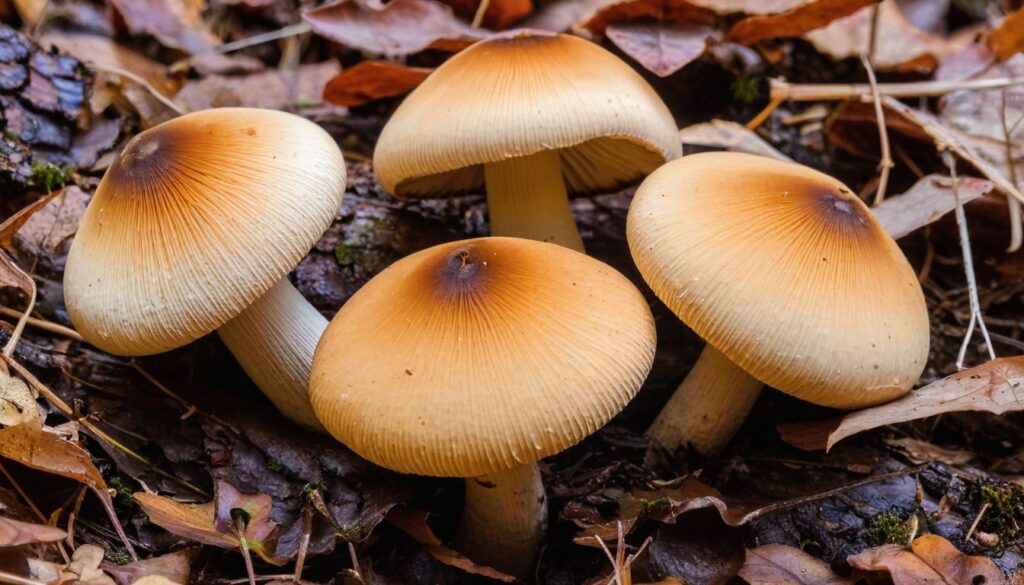Welcome to our comprehensive guide to Common Missouri Mushrooms. In this article, we will take you on a journey of discovery through the diverse world of fungi found in Missouri. From their unique features to how to identify them and interesting facts, we’ll equip you with the knowledge to appreciate and recognize these fascinating organisms. Whether you’re a seasoned collector or new to mushroom hunting, this guide is perfect for anyone interested in Missouri fungi.
Key Takeaways
- Learn to identify common Missouri mushrooms
- Discover the unique characteristics of mushrooms in Missouri
- Understand the anatomy of mushrooms and their various parts
- Explore edible and poisonous mushrooms in Missouri
- Discover the medicinal properties and rare species of Missouri mushrooms
Introduction to Missouri Mushrooms
Missouri is home to a wide variety of fascinating mushrooms, with over 2,000 species identified so far. From delicate chanterelles to towering puffballs, there is something for every mushroom enthusiast to appreciate. What makes Missouri particularly unique is the diverse range of ecosystems that further contribute to mushroom diversity; from the Ozark mountains to the Missouri River Valley, each region has something to offer. It is this rich biodiversity that has attracted experts and enthusiasts from around the world to explore the mushrooms of Missouri.
Understanding the different factors that contribute to mushroom diversity in Missouri is a crucial part of identifying the unique characteristics of each species. The weather patterns, soil composition, and surrounding flora and fauna all play a role in shaping Missouri’s fungi. By taking into account these environmental factors, we can start to develop a more comprehensive understanding of the mushrooms present in the state, allowing us to better appreciate the beauty and intricacy of Missouri’s ecosystem.
Understanding Mushroom Anatomy
A mushroom’s anatomy is essential to its proper identification. By understanding the various parts of a mushroom and their functions, you can quickly determine the species and whether it is safe to eat. The main parts of a mushroom are the cap, stem, gills, and spores.
The Cap
The cap is the rounded or oblong top of the mushroom. It can come in various shapes, sizes, and colors, depending on the species. The cap’s primary function is to protect the spores located underneath.
The Stem
The stem is the mushroom’s main support, and it connects the cap to the ground. It can be smooth or textured and can change in width throughout its length. The stem’s primary function is to hold up the mushroom and distribute nutrients throughout the fungal body.
The Gills
The gills are the thin, blade-like structures located underneath the mushroom’s cap. They produce spores that are released into the air and can be crucial for identification. The spore color can range from white to pink, brown, black, or purple.
The Spores
Spores are the reproductive cells of the mushroom and are found underneath the cap. They come in various colors and can be used to identify the species. Some mushrooms release spores through small holes or pores, instead of gills.
In summary, understanding mushroom anatomy can help you identify various mushrooms more safely and effectively. Now that you know the basics, let’s move on to identifying some of the most common mushroom families found in Missouri.
Identifying Common Mushroom Families in Missouri
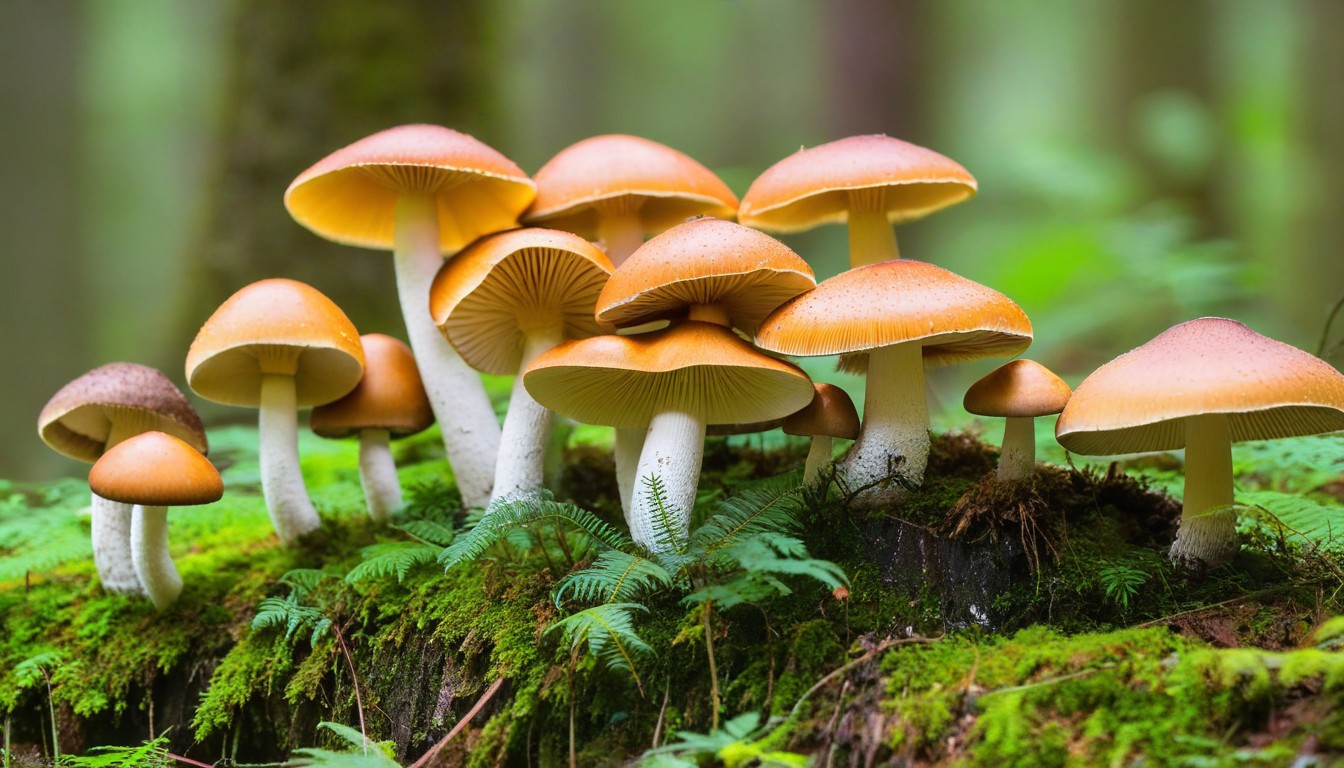
Missouri is home to a diverse range of mushroom families, each with their unique characteristics and identifying features. Understanding these families can help you confidently identify mushrooms in the field, while also avoiding potential look-alikes that may be toxic.
The Agaricus Family
The Agaricus family includes some of the most common edible mushrooms found in Missouri. These mushrooms have caps that are typically round or oval in shape, with gills on the underside of the cap. They often have stems that are thick and sturdy, with a ring around the stem near the cap. Common species include the meadow mushroom and the horse mushroom.
The Boletus Family
The Boletus family includes mushrooms with large, round caps and thick, sturdy stems. These mushrooms often have pores instead of gills on the underside of the cap, and the flesh of the mushroom will usually change colors when damaged. The boletus family includes both edible and toxic species, so it is important to properly identify them before consuming. Common species include the king bolete and the bay bolete.
The Amanita Family
The Amanita family is one of the most toxic mushroom families and is responsible for poisoning cases globally. They have a distinctive, umbrella-shaped cap, with gills underneath. The stem often has a ring or veil, and the base of the stem has a bulbous structure known as a volva. Some common species in the Amanita family include the death cap and the destroying angel, both of which are extremely poisonous.
|
Mushroom Family |
Distinguishing Features |
Habitat Preferences |
Potential Look-Alikes |
|---|---|---|---|
|
The Agaricus Family |
Round or oval caps, gills under the cap, sturdy stems with a ring around the stem. |
Grasslands, meadows, and forests. |
The poisonous destroying angel can resemble some Agaricus species. |
|
The Boletus Family |
Large, round caps, thick, sturdy stems, pores instead of gills under the cap. |
Forests and woodlands. |
False boletes, which can be toxic, can look similar to edible boletes. |
|
The Amanita Family |
Umbrella-shaped cap, gills underneath, stem with a ring or veil, a volva at the base of the stem. |
Forests and woodlands. |
The poisonous death cap can resemble edible Agaricus species. |
When identifying mushrooms, it is crucial to pay attention to all parts of the mushroom, including the cap, stem, gills, and spores. Distinguishing features such as color, texture, and shape can also aid in proper identification.
Notable Edible Mushrooms in Missouri
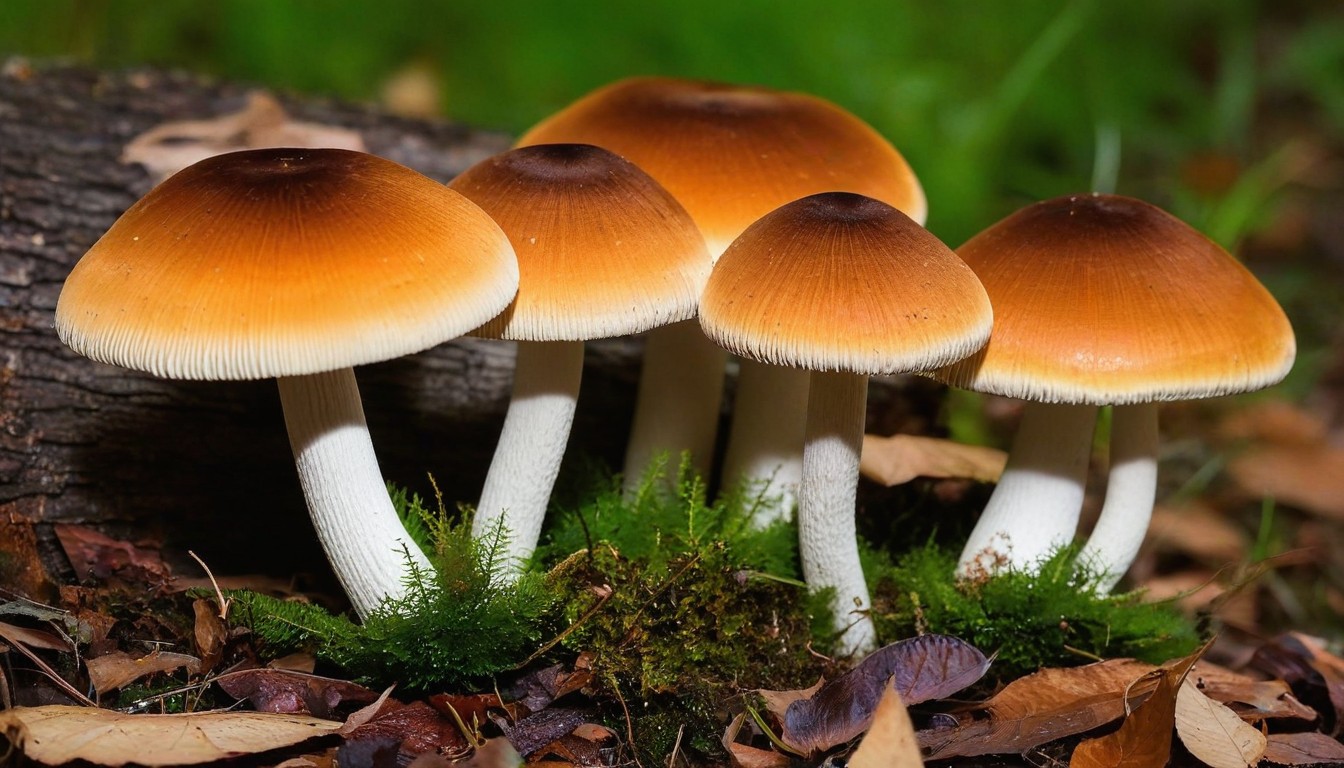
Foraging for edible mushrooms is a popular activity in Missouri, where a variety of safe-to-eat fungi can be found. Three of the most notable edible mushrooms found in the state are morels, chanterelles, and chicken of the woods. Morels are easy to spot with their distinctive honeycombed cap and hollow stem. Chanterelles are a bright yellow-orange color with a funnel-shaped cap and an earthy, nutty flavor. Chicken of the woods is a large, bright orange mushroom with a chewy, meaty texture reminiscent of chicken.
When foraging for edible mushrooms, it’s important to exercise caution and properly identify the mushrooms. Always consult a guidebook or expert if uncertain about a mushroom’s safety. Once you’ve harvested your mushrooms, ensure they are clean and free of debris before cooking. Enjoying these culinary delights can be a wonderful experience, provided safety precautions are taken.
Missouri’s Poisonous Mushrooms to Avoid
While Missouri is home to many edible and medicinal mushrooms, it’s important to be aware of the poisonous species to avoid any potential health risks. Some mushrooms can cause severe illness or even death, especially if consumed in large quantities or by susceptible individuals.
Dangerous Mushroom Species in Missouri
The following are some of the dangerous mushrooms species found in Missouri:
|
Name |
Description |
Toxicity |
|---|---|---|
|
Death Cap |
A medium to large mushroom with a cap that’s usually greenish-yellow to light brown in color. |
Highly toxic. Symptoms can appear 6-24 hours after ingestion and include severe abdominal pain, vomiting, and diarrhea, which can lead to dehydration and electrolyte imbalance. In severe cases, liver and kidney damage can occur, leading to death. |
|
Destroying Angel |
A large, white mushroom with gills that are initially white but eventually become pink. |
Highly toxic. Symptoms can appear 6-24 hours after ingestion and include severe abdominal pain, vomiting, and diarrhea, which can lead to dehydration and electrolyte imbalance. In severe cases, liver and kidney damage can occur, leading to death. |
|
False Morels |
A small to medium-sized mushroom with a cap that’s usually grayish or brownish in color. |
Can be toxic depending on the species and the amount consumed. Symptoms can include stomach pain, vomiting, and diarrhea. In severe cases, liver and kidney damage can occur. |
It’s important to note that some poisonous mushrooms can resemble harmless ones, so it’s crucial to be familiar with the distinguishing features and pay close attention to the identification process. When in doubt, it’s best to avoid consuming any wild mushrooms.
Remember to always exercise caution when foraging and consult an expert if uncertain about a mushroom’s safety. Stay safe and happy mushroom hunting!
Medicinal Properties of Missouri Mushrooms
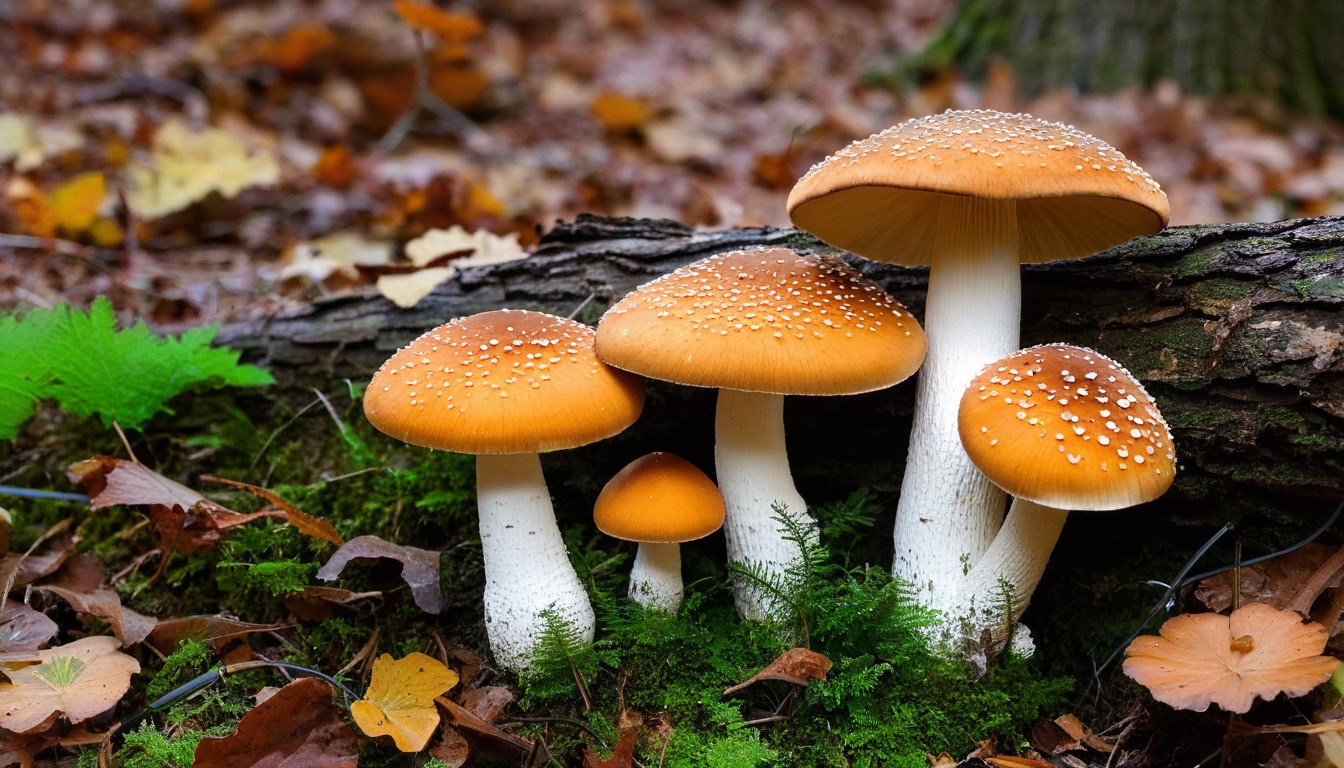
Did you know certain mushrooms in Missouri possess medicinal properties that have been used for centuries in traditional medicine? These species are being studied for their potential health benefits and therapeutic applications.
Turkey tail is a common sight in Missouri’s woodlands and is known for its immune-boosting properties. It contains polysaccharide-K (PSK), which has been shown to stimulate the immune system and improve the effectiveness of chemotherapy.
Another mushroom with potent medicinal properties is the reishi mushroom. This mushroom has been used for centuries in traditional Chinese medicine and is now being studied for its potential to enhance the immune system, reduce inflammation, lower blood pressure and improve cholesterol levels.
|
Medicinal Mushroom |
Potential Health Benefits |
|---|---|
|
Turkey Tail |
Immune-boosting, chemotherapy support |
|
Reishi |
Boost immune system, reduce inflammation, lower blood pressure, improve cholesterol levels |
“Mushrooms are a great, all-natural way to support your body’s immune system. Turkey tail and reishi are two species that have been heavily studied for their potential health benefits. It’s fascinating to see the therapeutic applications of these incredible fungi.” – Dr. Jane Williams, MD
Keep in mind that while many mushrooms have medicinal properties, it is essential to properly identify them before attempting to consume them. Always exercise caution and consult an expert if uncertain about a mushroom’s safety.
Unusual and Unique Missouri Mushrooms
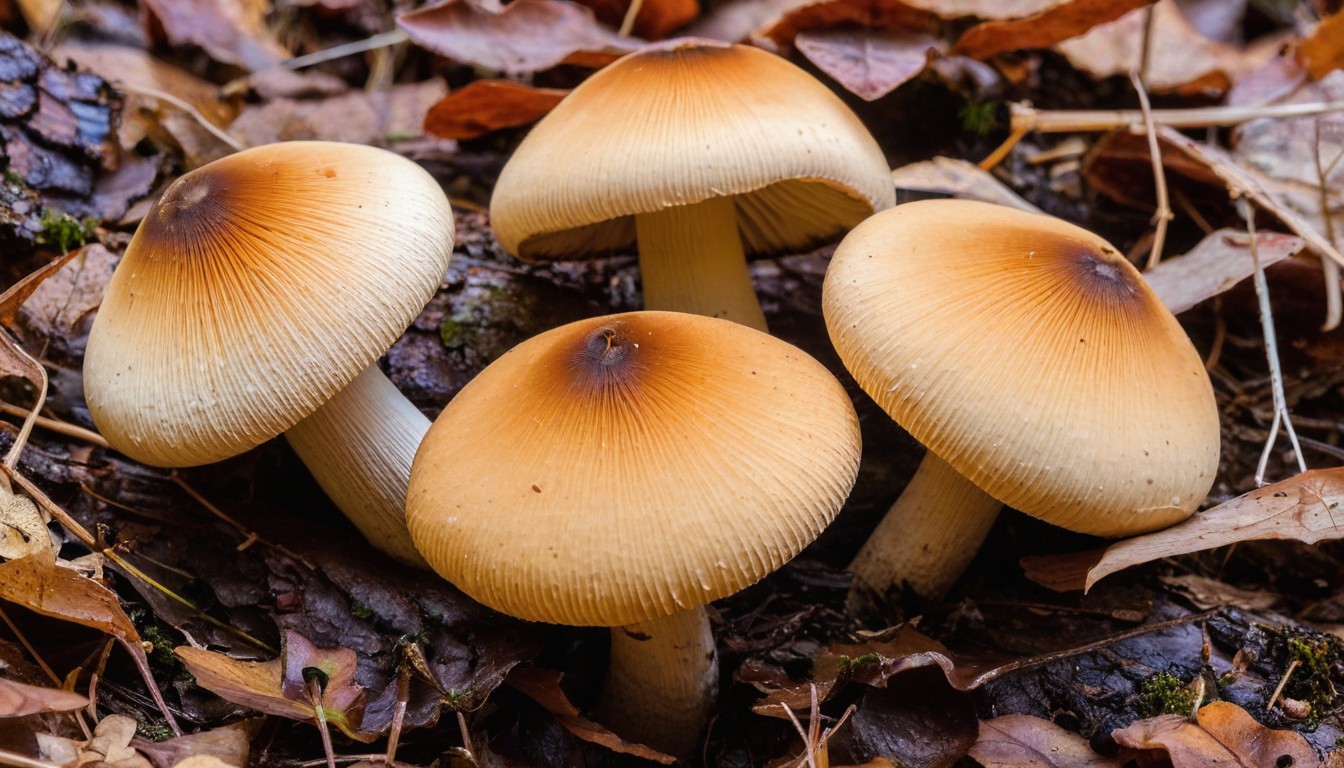
Missouri’s forests and wetlands are home to an incredible diversity of mushroom species, including some that are truly unique and unusual. Here are just a few examples of the rarest fungi found in the state:
|
Mushroom Name |
Description |
Habitat |
|---|---|---|
|
Bioluminescent mushrooms |
These fascinating fungi emit a soft, greenish-blue light in the dark, making for a magical nighttime display in the woods. |
Damp forests and decaying wood |
|
Fairy ring mushrooms |
These delicate little mushrooms grow in circles and are often associated with myths and legends of the faerie folk. |
Grassy areas and meadows |
|
The “devil’s cigar” |
Also known as the “Texas star,” these mushrooms form unusual cigar-shaped fruiting bodies that look like something out of a science fiction movie. |
Decaying wood |
|
The “dog stinkhorn” |
Despite its unpleasant scent, this mushroom is fascinating to behold, with its distinctive phallic shape and bright red cap. |
Leaf litter and soil |
These are just a few examples of the many unusual and unique mushrooms that can be found in Missouri’s forests, meadows, and wetlands. Keep your eyes peeled when exploring the great outdoors, and who knows what amazing discoveries you might make!
Conclusion
As we conclude this guide, we hope it has provided you with valuable insights into the fascinating world of Common Missouri Mushrooms. With the knowledge gained, we encourage you to explore the diverse species of fungi in Missouri and appreciate their role in the ecosystem.
Remember, accurate identification is crucial before consuming any mushrooms. Always exercise caution when foraging, seek advice from experts, and be aware of the toxic species.
Happy hunting, and we hope you continue to enjoy the beauty of Missouri’s mushroom diversity.
FAQ
What are some common Missouri mushrooms?
Some common Missouri mushrooms include morels, chanterelles, and chicken of the woods.
How can I identify mushrooms in Missouri?
To identify mushrooms in Missouri, it is important to familiarize yourself with their anatomy and learn about distinguishing features of different mushroom families.
Are there edible mushrooms in Missouri?
Yes, there are edible mushrooms in Missouri, such as morels, chanterelles, and chicken of the woods. However, caution should always be exercised when foraging for mushrooms.
What are some poisonous mushrooms to avoid in Missouri?
There are several poisonous mushrooms in Missouri, including the death cap and destroying angel. It is crucial to learn how to differentiate them from harmless look-alike mushrooms.
Do Missouri mushrooms have any medicinal properties?
Yes, certain mushrooms in Missouri, such as turkey tail and reishi, are believed to possess medicinal properties and have been used in traditional medicine for various health benefits.
Are there any unique or unusual mushrooms found in Missouri?
Yes, Missouri is home to some unique and unusual mushroom species, including bioluminescent mushrooms and tiny fairy rings.
Can I forage for mushrooms in Missouri?
Yes, you can forage for mushrooms in Missouri. However, it is important to exercise caution, properly identify mushrooms, and consult an expert if you are unsure about a mushroom’s safety.
How should I harvest and prepare edible mushrooms?
When harvesting edible mushrooms in Missouri, it is essential to use proper techniques to preserve the mushroom’s habitat. Additionally, ensure that you correctly clean and cook the mushrooms before consumption.
Where can I find more information about Missouri mushrooms?
For more information about Missouri mushrooms, you can consult field guides, join local mycology clubs, or reach out to knowledgeable experts in the field.

